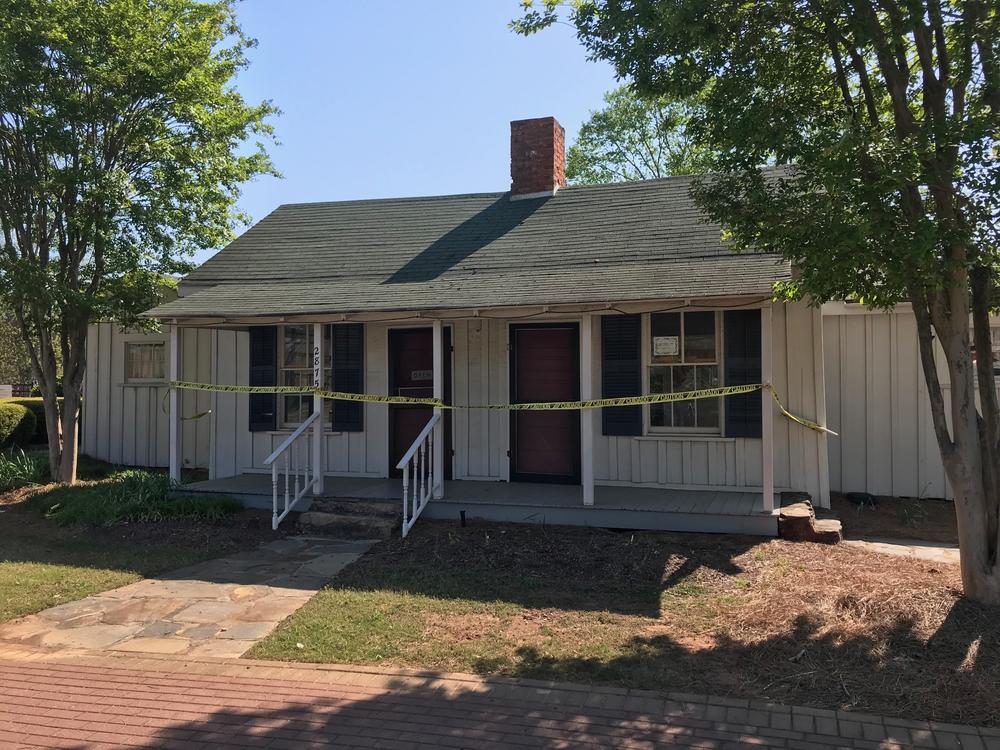
Caption
Aunt Fanny's Cabin sits vacant and unused in the heart of Smyrna, 30 years after the landmark restaurant that it housed closed. A decades-long debate over whether to preserve or demolish the building over its racist past has endured as the Atlanta suburb has changed.
Credit: Orlando Montoya / Georgia Public Broadcasting


